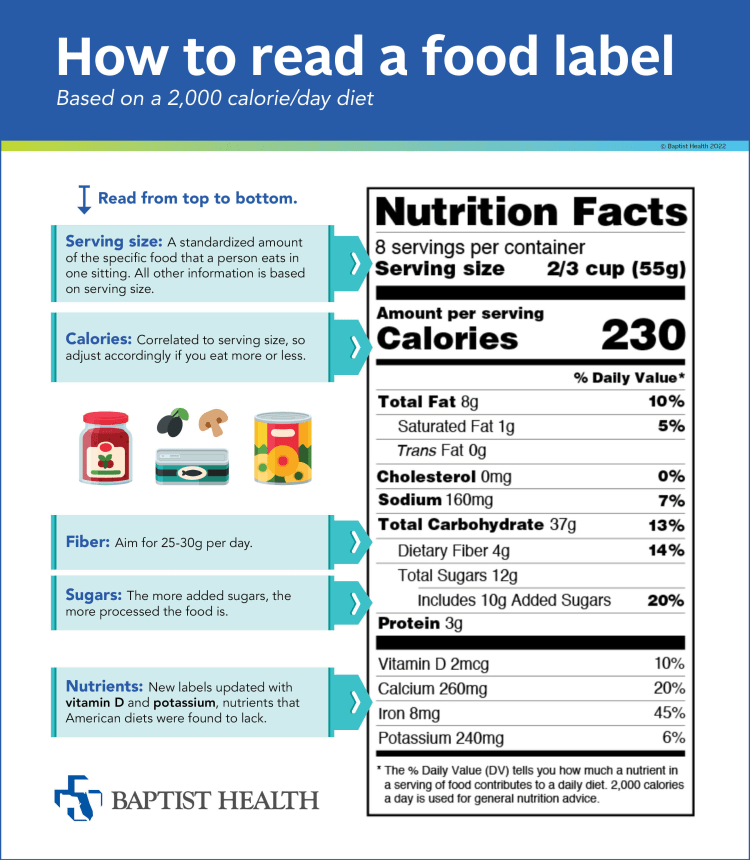Nutrition's new look
Understanding the updated FDA food labels.

Over the past two years, you may have noticed some changes to the U.S. Food and Drug Administration (FDA) nutrition labels found on your favorite foods.
In 2016, the FDA issued updates for the first time in 20 years, with manufacturers required to implement the changes in 2021. Anne Powers, RDN, a registered dietitian at Baptist Health, explained how to read nutrition labels and what the changes mean.
Advice for analyzing
The percent daily values on nutrition labels are based on a diet of 2,000 calories per day, but Powers said some people need more or less depending on their height, weight, age and lifestyle.
“Whether you’re trying to lose weight or eat healthy, what matters most is where the calories are coming from and what else you’re doing throughout the day,” she said.
Powers recommended reading the label from top to bottom, with the most important information being the serving size at the very top.

New serving sizes
Powers said to keep in mind that all information on the label is tailored to the recommended serving size, so if you’re eating more or less, you’ll need to do some math to adjust the other values accordingly.
“The serving size listed on the new nutrition label is bolder, larger and more realistic,” Powers said. “It’s closer to how much people are actually eating.”
Calorie count
This value is also bolder and larger on the new labels, but “calories from fat” is no longer listed, as this can be misleading.
“Some fats are healthier than others,” she explained. “Unsaturated fats, such as those found in avocados and olive oil, are better for you than the saturated fats found in fried foods.”
Vital vitamins
The FDA reviewed the vitamins Americans lack and found most people get adequate servings of vitamins A and C, so they removed those from the labels. However, they added potassium and vitamin D, which the agency found more people to be lacking.
As you look at the updated nutrition labels, keep your own personal health goals in mind, and don’t be too hard on yourself. Changing your eating habits takes time, and paying more attention to what types of foods you’re putting into your body is a good place to start.
Do you have questions about healthy eating habits? Baptist Wellness Centers provide health coaching at locations throughout the community. You can request a free health screening online.



